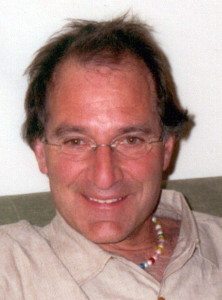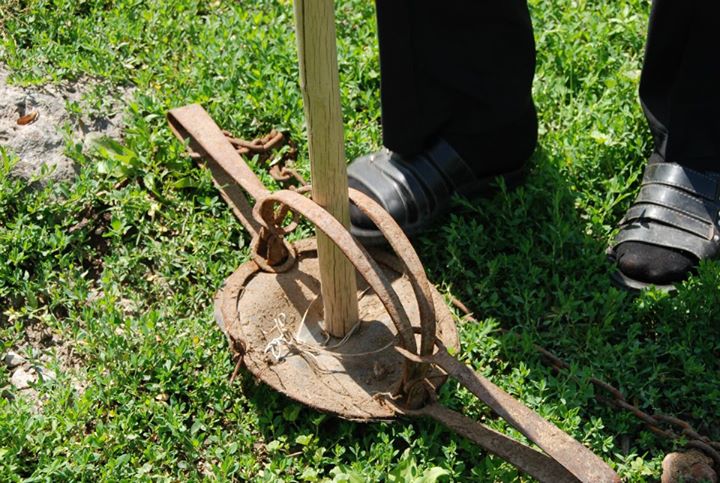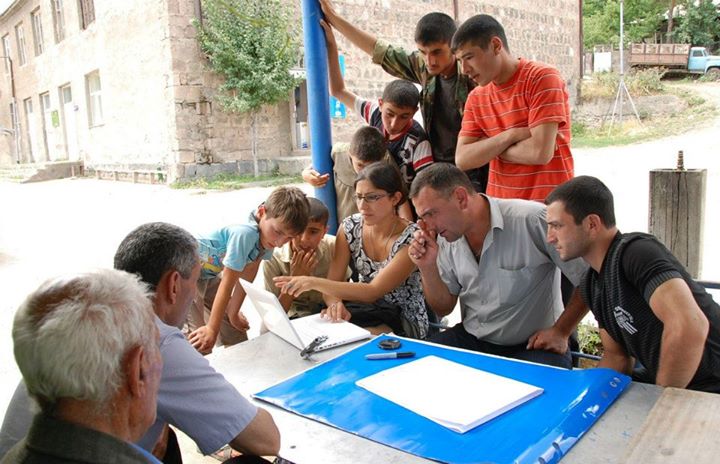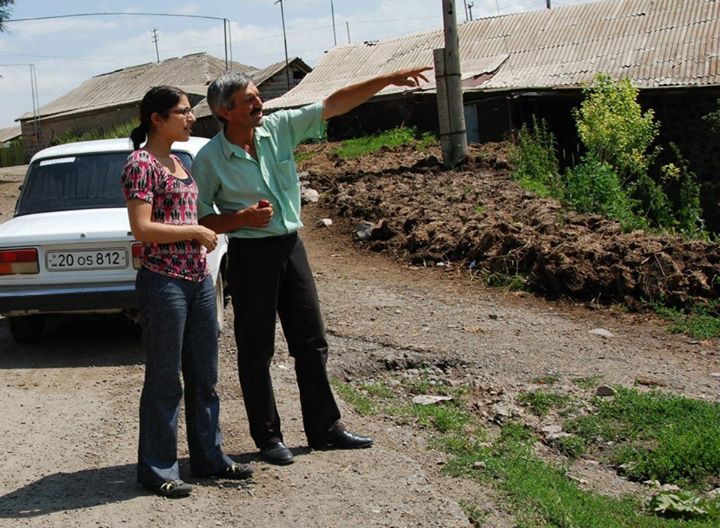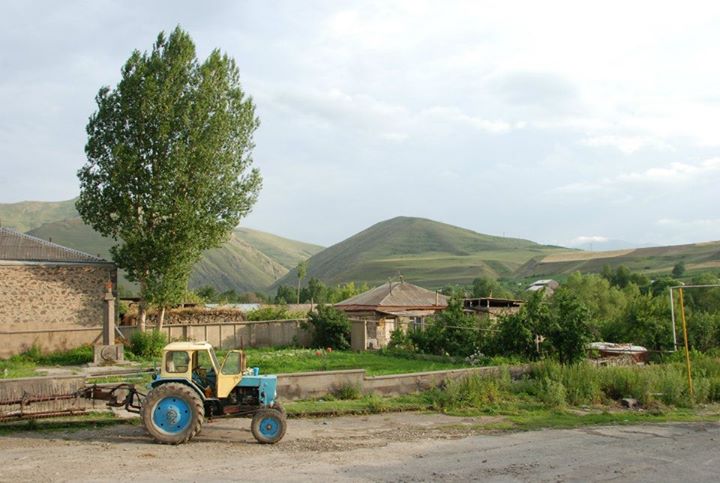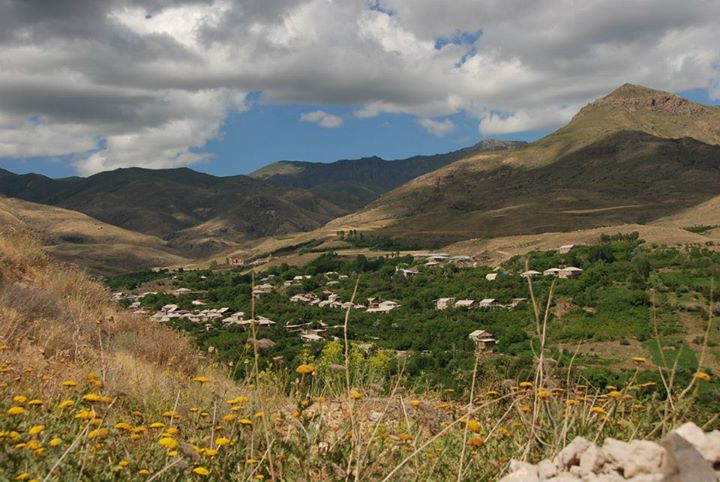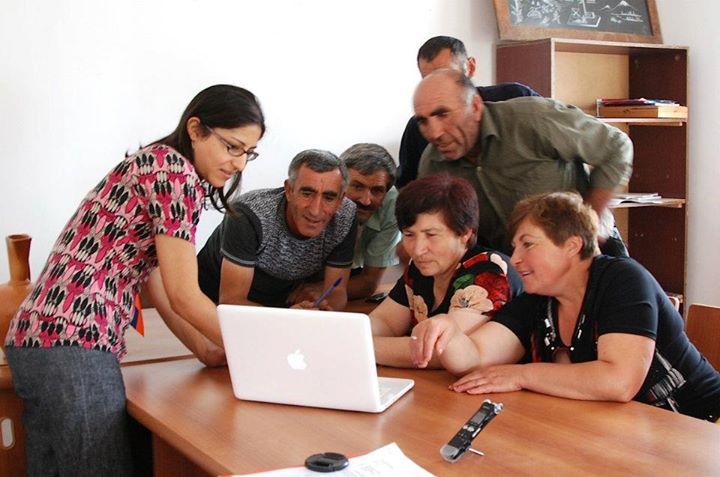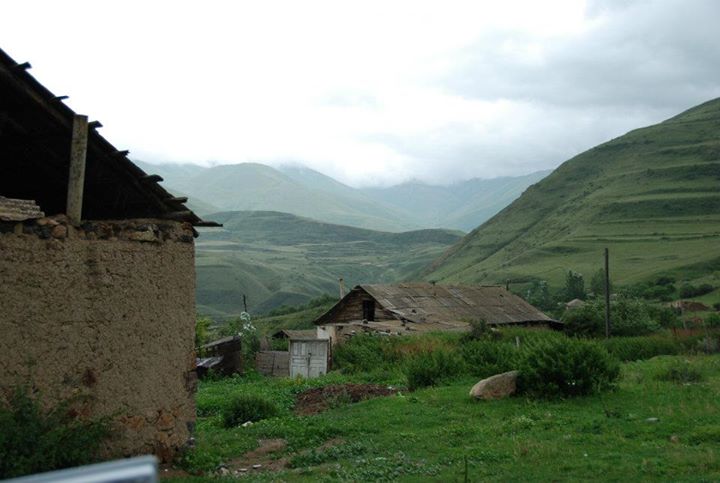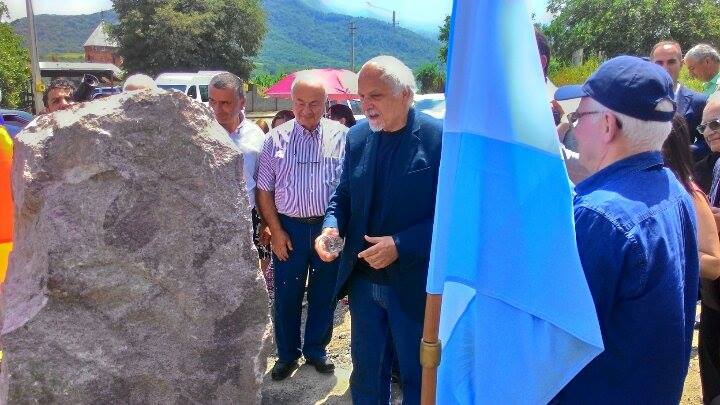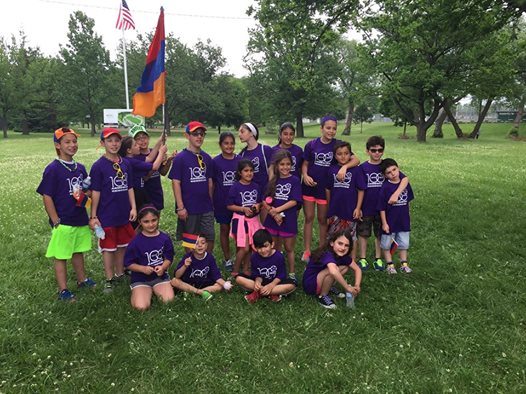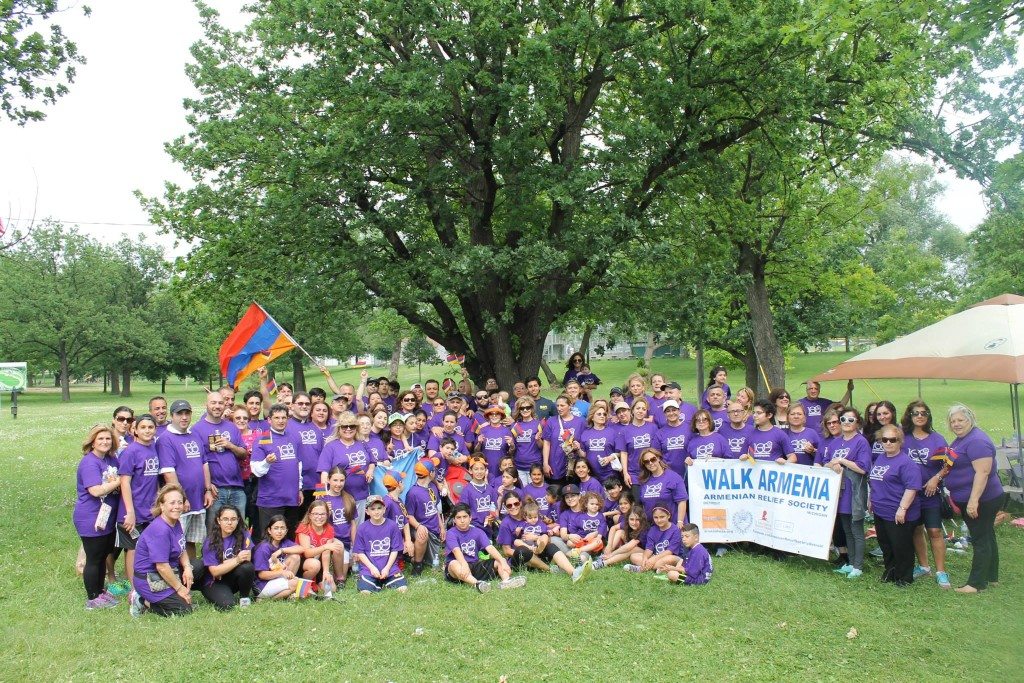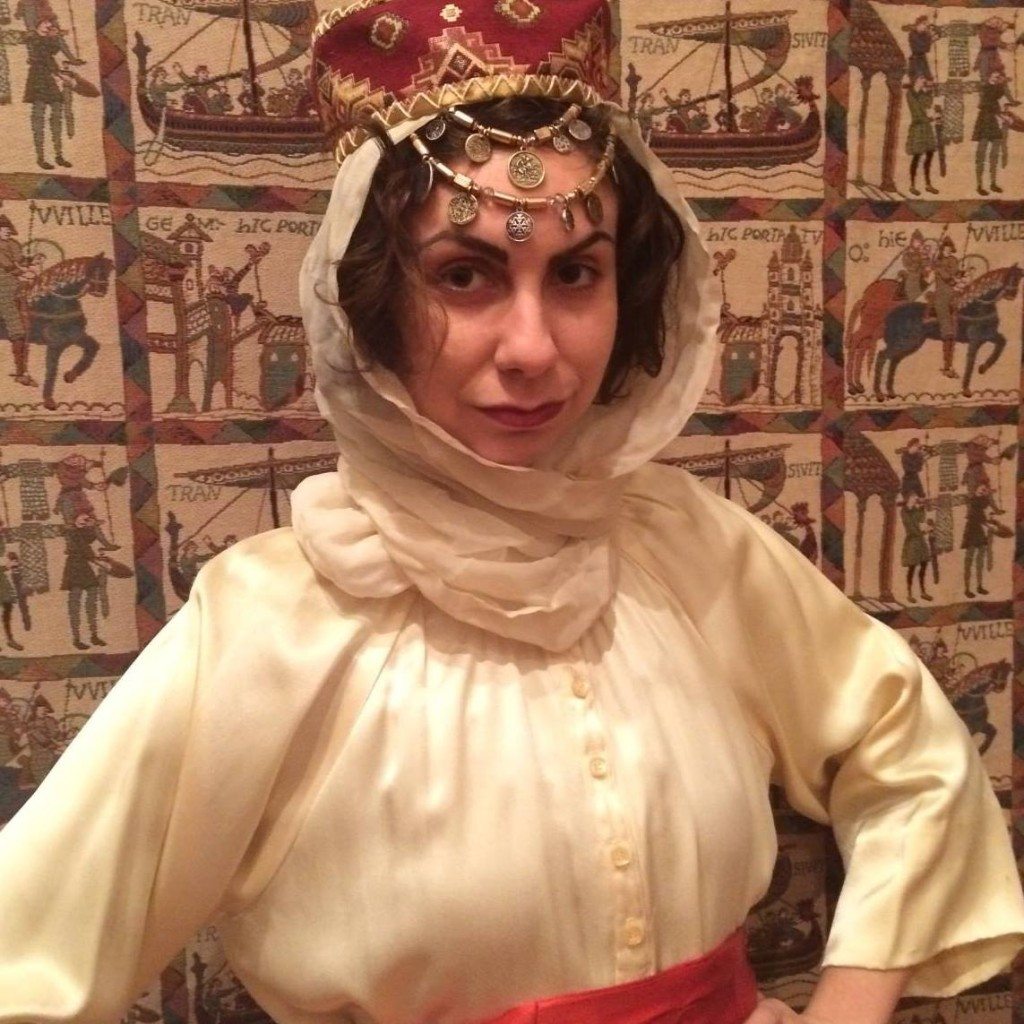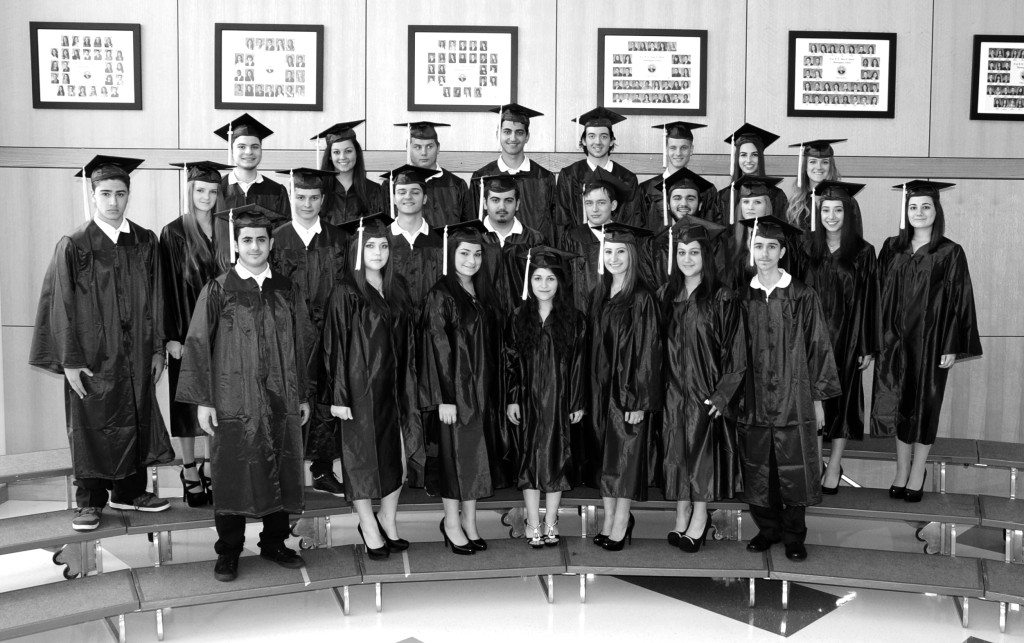Special for the Armenian Weekly
As an Armenian American, Serda Ozbenian, a current Fulbright Fellow in Armenia, brought her interest and knowledge of the treatment of wolves and bears in the United States to Armenia.
Ozbenian mentioned to me how the strategy for the “wolf problem” in the U.S. was to eradicate them completely. “Wolves are a vital keystone species and they therefore impact all other species below them in the food chain.” she said. “In Yellowstone Park, the lack of wolves led to a high increase in elk, which led to low survival rates of young trees. The lack of trees led to a lack of habitat for many other species and an increase in erosion, in turn degrading water quality.” The wolves had a purpose, it seemed.
![]()
A trap one of the villagers used to catch wolves and other animals; such traps are illegal in Armenia.
Ozbenian, the executive director of the Armenian Environmental Network, has been involved with Armenia’s environmental challenges since 2007, but her personal interest has always been on wildlife protection. In 2010, she began volunteering with the Foundation for the Preservation of Wildlife and Cultural Assets (FPWC) via Birthright Armenia and, after falling in love with Armenia’s scenery and nature, she decided that she would pursue a graduate degree, and that Armenian wildlife would be the focus.
She spoke with researchers at the American University of Armenia’s Acopian Center for the Environment, and was informed of a new focus developing on research with human-carnivore conflicts. Since Ozbenian was aware of how the U.S. dealt with such negative human-wildlife interactions, she had hope that Armenia’s strategy could be different.
![]()
Community mapping using Google Earth
In 2012, she surveyed 23 villages with interviews, focus groups, and tours of the key areas. It was during this time that she understood that many people affected by the “interaction” with wildlife did not support such extreme measures to eradicate them, but simply wanted support from the government.
During Soviet times, hunts of wild carnivores were organized and bears and wolves were regularly hunted, whereas now villages themselves are responsible, but often have little, if any, support in terms of resources. “Yes, villagers have conflicts with wildlife; however, the conflict with the government as well as the lack of support from them exacerbates the already difficult situation,” Ozbenian explained. “Instead of vilifying the wolves, I believe it vilifies the government to offer so little support, if any, to deal with these conflicts.”
Ozbenian made sure to make it very clear that the situation between wolves, bears, and humans is not black and white. She wanted her research to be as objective as possible, and to really understand the situation from both sides. “Unfortunately the instinct of wolves is to kill all the sheep they find in a den or chicken in a coop. Bears can knock over fruit trees, destroy orchards, as well as bee hives kept by villagers. Villagers can be very affected by the presence of wolves and bears, and suffer financial burdens as a result of both, of course causing understandable frustration and animosity.”
However, the media coverage often sensationalizes wildlife interactions—most notably with wolves—and for many residents of Yerevan, their only knowledge of the “wolves in Armenia” is based solely on the coverage of attacks, as if they exist simply to destroy. Perhaps it is this mentality that allowed people to hunt wolves relentlessly. The media portrayal that leads to a fear of wolves can often allow horrifying practices to take place, with the rhetoric of “What about the children?”
![]()
‘Wolves come into the community from here,’ a villager says
When a notorious “wolf hunter” in Syunik caught a wolf by the use of a snare, tied the injured animal up and nuzzled it, and drove it around the village in his truck, he was hailed as a hero, while the animal was left to suffer and die slowly from its wounds. The video of the event was uploaded to YouTube. A mayor in the same region had a stuffed wolf that he had killed proudly displayed in his home, while another village head bragged about his hunting skills and even invited Ozbenian said,to join him on his upcoming wolf hunts.
It eventually became the case that the government refused to hand over any payments for wolves caught with snares; they had to be shot to even qualify for payment. Hunting wolves itself is legal, and often comes with promises of financial rewards, but one still needs a hunting license as well as a special permit (in theory). “Wolves are vilified around the world, and where wolves and humans interact, there is often trouble. Lethal removal is not the answer, co-existence is, which may be difficult, but necessary.”
A new, unfortunate trend Ozbenian recently discovered is the selling of wolf ovaries on buy/sell websites in Armenia, with the claim that they will help with infertility. Disturbingly, it is said if the animal was alive when the ovaries were removed, it will be more effective; if it can be proven that this was the case via a video or pictures, the ovaries can sell up to 95,000 AMD (around $200).
Bears, on the other hand, are an interesting case in Armenia. Not vilified to the extent of wolves, but still seen as being a threat to farmers, they are actually a protected species and are in the Red Book, making it illegal to hunt them unless there is special permission acquired from the government.
![]()
Uyts in Sisian
However, they are still poached for meat and protection, and many are actually trapped and kept as entertainment in horrifyingly small cages in deplorable conditions for restaurants throughout Armenia. A recent trip to Jermuk, where the bear population is reportedly very large, led Ozbenian and I to find multiple signs that read, “No hunting allowed.” When speaking with a local resident, though, he quickly dispelled our optimism and stated that the signs meant nothing: If people plan to hunt or poach, they do so—and have.
While some communities Ozbenian spoke with expressed anger at the situation, others talked about how they felt they had been forgotten, how nobody seems to be concerned or sympathetic to their plight. One community member in Gegharkunik marz had an interesting way of looking at the situation. After asking him about the two cows killed in his area recently, he called the livestock eaten or killed—as well as the trees or beehives destroyed by wolves and bears—a “nature tax.” He continued, “Of course it is a problem, but what can we do? This is the tax we pay to nature.”
While it seemed like a refreshingly “zen” approach, Ozbenian believes there are things villagers can do to prevent wolves and bears from coming too close to their homes. One common mistake that attracts these animals to farms and homes is leaving garbage and the bones of livestock out on the sides of the roads, or in make-shift landfills, which attract otherwise scared animals to come closer to human populations.
What these communities need are the resources to build stronger sheds, roofs, and fences, as well as to acquire sheep dogs. When Ozbenian learned about a Yezidi community in Armenia that seems to have a better strategy and success rate when dealing with wildlife, she was told it had to do with their livestock-guarding dogs more than anything else.
Ozbenian is in Armenia again, this time for nine months, to research wolves and bears, but her focus is slightly different: Her Fulbright research project is to gather baseline information that is critical to the proper management of wolves and bears in Armenia, including the relative density and abundance of wolves and bears, and what they are eating (wild or domestic food). She will be conducting surveys to locate scat, hair, tracks, scrapes, and food remains, and will be collecting scat for DNA analysis (to identify individuals) and dietary analysis (to identify what they are eating). Wolf howling surveys will also be conducted to identify the locations of wolf dens and to estimate wolf numbers.
When I asked Ozbenian if she felt optimistic in her end goal of promoting peaceful coexistence between wildlife and people, she quickly nodded her head and said, “The knowledge of the importance of bear and wolf populations in the ecosystem is generally well understood here, unlike some areas in the world. The extreme measures are only supported by a few, and usually only as a last resort.”
She continued, “My goals are long term, and my research and findings will only help shed more light on the best way to go about a realistic approach to a peaceful coexistence. My hope is that my research will lead to the elimination of harmful wildlife management policies and the development of a well-informed human-wildlife conflict management plan with heavy community involvement.”
While I have yet to see a bear or a wolf in Canada or Armenia, Ozbenian seems to already be a target/magnet. On a recent camping trip where we accidentally ventured off the main road looking for a notorious waterfall, we met a shepherd who, after inviting us to his home for tea, told us we had been dangerously close to a mountain with so many bears that it was known as the “archanots” (bear den), and said we would have soon become “bear food”!
To follow Serda Ozbenian’s research, visit her blog at https://hyewolvesnbears.wordpress.com.
![]()
Yelpin, Vayots Dzor
![]()
More community mapping
![]()
Storm approaching in Torunik
The post Serda and the Wolves: One Woman’s Mission to Protect Armenia’s Wildlife appeared first on Armenian Weekly.






